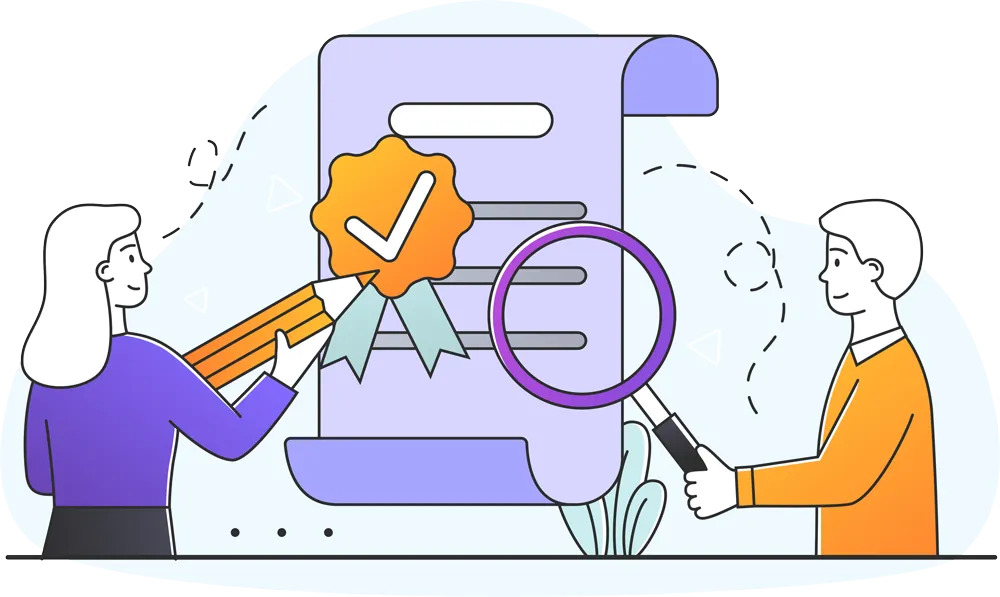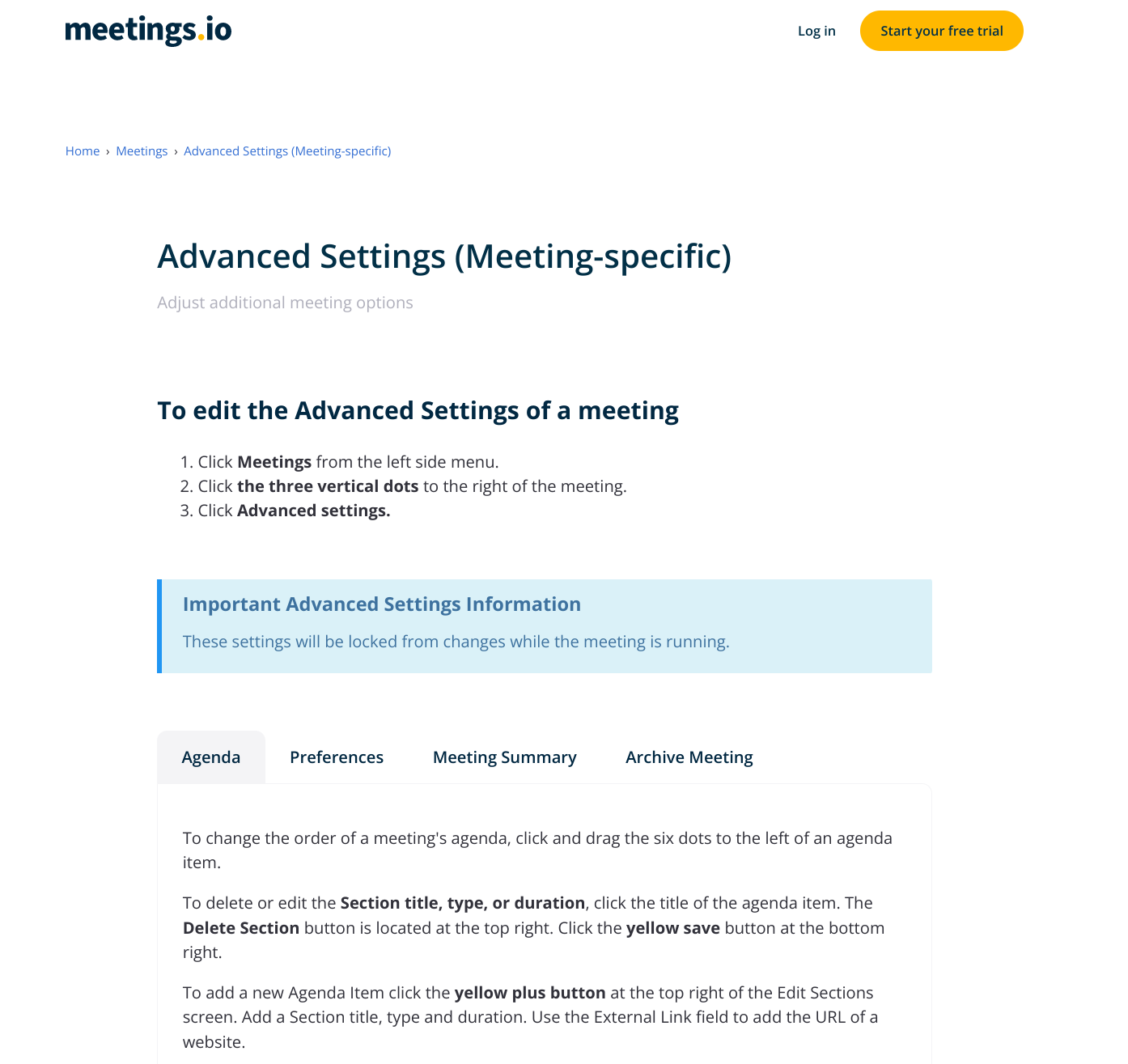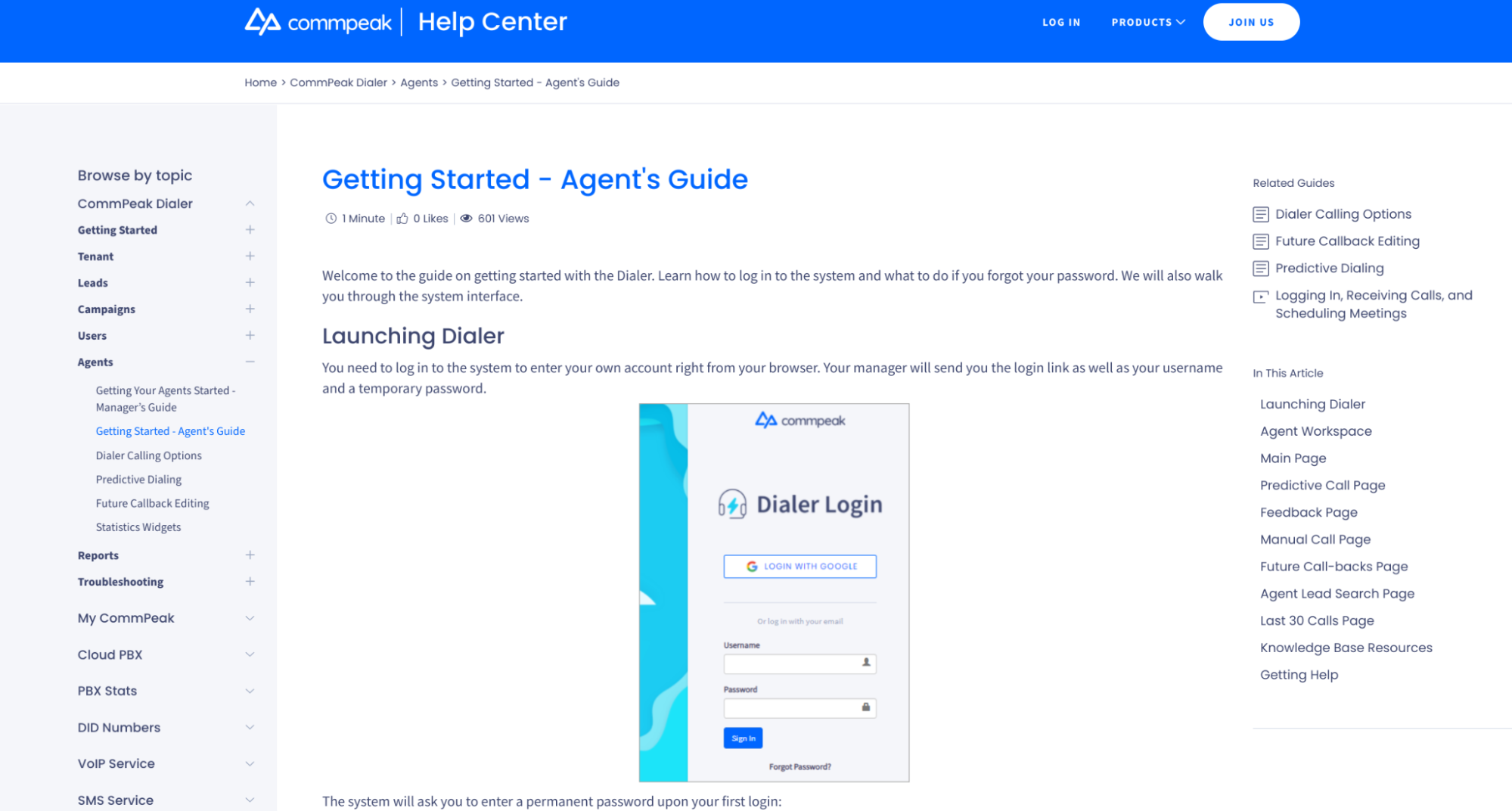
If you let out an audible groan upon seeing the term product documentation, we hear you.
Teams often see product documentation as a “necessary evil”. They know it needs to be created, but they don’t see the value in putting much effort into creating it.
And that’s a big mistake.
Taking half-measures in your approach to product documentation not only punishes your users but also causes you to miss out on a ton of opportunities to get them more engaged with your brand.
Product documentation is not a sunken cost; it’s an investment.
With that in mind, today we’re going to discuss all that goes into a strategic approach to product documentation — and everything you’ll need to make it happen.
What is Product Documentation?
Product documentation is a type of technical documentation that explains almost everything there is to know about a product or piece of software.
The goal of product documentation is to enable users to get maximum use and value out of the product in question. From there, it can also be used to empower users to engage deeper with your company and strive ever-closer to their goals.
Product documentation covers a wide spectrum of information, such as:
- Product specifications and system requirements
- Instructions for product setup, installation, and configuration
- Specific use case instructions
- Troubleshooting info
- User documentation and answers to frequently asked questions

(Source)
Benefits of Creating Quality Product Documentation
Done well, product documentation can be largely beneficial to both your customers and your business.
(Remember: It’s not a sunken cost, but an investment.)
User Benefits
First, let’s look at how product documentation benefits your users.
Optimize User Productivity
Again, the whole point of product documentation is to enable your customers to get the most they can out of your product.
With comprehensive product documentation in hand, your users will:
- Understand the key features of your product
- Know which features are most pertinent for their use case
- Have clear direction as to how to use each feature for their specific purposes
In turn, they can take an informed, confident approach to your product — and can always accomplish what they set out to when using it.
Offer Convenient Support
Offering customer self-service is non-negotiable by today’s standards.
And while there’s more to self-service than product documentation, it’s a crucial piece of the puzzle.
For one, it gives the user the information they need, when they need it. What’s more, strategic product documentation also focuses on the presentation of this info — ensuring users can actually find and digest the necessary info with ease.
As we’ll discuss, making this information available will also take some weight off your support staff’s shoulders. That means they’ll be better equipped to work with users who do need some hands-on assistance.
Empower Customers to Do More
Comprehensive product documentation puts everything about a given product out on the table — and lets your users soak it all up.
Your current customers can learn more about your product’s advanced features and functions. This enables them to become power-users, ultimately getting even more value out of your product as time goes on.
Your prospective customers can also benefit from this comprehensive info, too. In fact, a study by D2 Worldwide showed that consumers see product documentation as the third most-helpful type of content when making a purchasing decision.
(For the curious, product reviews and overall website quality ranked 1st and 2nd, respectively.)
In any case, the more your users know about your product, the better they’ll be able to use it.
Internal Benefits
To be sure, investing in your product documentation initiatives will also pay off for your business in a number of ways.
Enhance Customer Service and Support
To reiterate from above:
Offering self-service of any kind means your customer service and support team will have more time and resources to invest into the “bigger picture” issues your users may face.
Your service and support staff can also use your product documentation, themselves, to provide better guidance to their users.
For one, both parties can literally stay on the same page throughout each engagement. Moreover, your support team can use product documentation to point out more advanced features — and can also point the user toward additional content, as well.
Increase Engagement, Retention, and Value of Customers
Product documentation helps keep your customers engaged throughout their journey with your brand.
As mentioned, your prospective customers often consult your product documentation to make a more informed purchasing decision. If they find what they’re looking for, that’s just one more tick in the “Yes” column for your sales team.
Backing up a bit, your product documentation can actually help attract new prospects via search engine visibility. In delivering highly relevant answers and info to those making high-intent search queries, you’ll inevitably drive new business to your website.
Looking at your current customers, again:
The better they understand all your product has to offer, the more value they can get out of it. Similarly, as they grow more successful through using your product, your product documentation can point them toward other products they may find useful along their path to success.
In all cases, it means more opportunities to generate more business.
Use Engagement Data to Inform Product Development
How your users engage with your product documentation can tell you a lot about how your product needs to improve.
For example, if content revolving around a specific feature is getting a relatively high number of visitors, it might be a sign that the feature isn’t all that user-friendly. Your users’ on-site paths can also provide insight into how they use your product — and where they tend to experience the most friction.
Used in combination with product usage data, customer feedback, and other such information, this engagement data can allow you to make laser-focused improvements to your product — along with your overall customer experience.
Product Documentation Best Practices
Of course, a strategic and intentional approach to your product documentation initiatives is needed to experience these benefits.
(Again, taking half-measures here can potentially alienate your users, and cause you to miss out on opportunities to engage them further.)
That said, let’s take a look at some of the key ways to ensure your product documentation provides top-notch value to your audience.
Standardize Your Approach
Your first order of business will be to develop a set of standard operating procedures for your product documentation processes.
Start by defining when you’ll need to create and/or update product documentation.
Some examples here include:
- When new products are released
- When existing products are updated
- When expanding to new audiences
Overall, you want to build product documentation into and around the critical moments of the product’s lifespan. Instead of being “in addition to” product development, your documentation efforts should actually be a part of product development — which will allow you to be much more focused and intentional when creating it.
You’ll then want to create a style guide for your team to follow when creating product documentation content. This makes for streamlined content creation on your end, and a consistent experience for your users.

(Source)
Speaking of content creation…
Create For a Specific Purpose
As we said earlier, product documentation comes in many shapes and sizes, such as:
- Instructional, how-to articles
- FAQ and troubleshooting guides
- Reference databases
…and more.
Along with the above-mentioned style guide, you’ll also want to develop templates for each of these formats.
Check out these examples from TCL:
Net2Phone takes a similar approach for different types of product documentation:
Ultimately, your goal is to present information in the most intuitive, digestible manner possible. That way, your users can quickly get the info they need — and just as quickly get back to using your product.
Create for a Specific Audience
Your product documentation should also be created with your audience in mind.
Looking at your audience as a whole, there are two main things to consider:
- Their level of expertise regarding your products
- Their expectations regarding your informational content
You need to be sure your product documentation doesn’t overwhelm your users. This is especially true considering they’ll likely be a bit overwhelmed as it is.
(You don’t check a troubleshooting guide when things are going well, right?)
To this end, your documentation should always be:
- Simple: Use language your average user can understand — and avoid using unnecessary jargon and complex language.
- Specific: Focus on a specific topic or issue with each document you create. When in doubt, split a single document into multiple pieces of content.
- Concise: Get to the point — and avoid adding superfluous information or unneeded details that may confuse your reader.
Zooming in a bit, you might also tailor specific product documentation to a more specific audience. For example, while your “Getting Started” content shouldn’t be too jargon-heavy, documentation made for advanced users can be a bit more…advanced.
Even so, you should always take an economical approach to creating product documentation. In creating with a specific audience in mind, you’ll again enable them to quickly get what they need before diving back in with your product.
Organize Product Documentation for Accessibility
Organizing your product documentation strategically ensures your users can actually access and use it as intended.
An intuitive database structure optimizes both visibility and browsability: It allows your users to easily find the information they’re looking for and to peruse related content and information. This can potentially increase user engagement — in terms of both time and intensity.
Product documentation databases can be structured in different ways, depending on user needs and the like.
Net2Phone, for example, organizes its knowledge base by product, then by customer type and service use case.
While Formant separates its documentation by user expertise:
You’ll also want to tie content together via interlinking and suggestions for further reading.
Though not necessarily a part of structuring your database, it goes hand-in-hand with increasing the visibility of your content and keeping your users engaged.
On your end, it’s worth noting that this all makes it easier to keep your documentation accurate and up-to-date — and to avoid data loss, redundant documentation, and other such issues.
Support Text-Based Documentation with Multimedia Content
As many of the examples we’ve discussed thus far have shown, multimedia content is an essential part of effective product documentation.
Images, video, and audio content can all be used to:
- Reinforce and/or clarify specific instructions
- Demonstrate certain processes or activities
- Communicate tacit knowledge that often can’t be translated into words
That said, your product documentation content will be mostly text-based — and it should be.
That is, you shouldn’t inject multimedia “just because”, but only when necessary to inform and empower your users. And you definitely don’t want to include any multimedia content that might actually distract from the valuable information at hand.
The more intentional your use of multimedia, the more helpful and informative your product documentation will be.
Make Ongoing Improvements to Product Documentation
As we’ve touched on, your product documentation should be ever-evolving as time goes on.
Of course, you’ll need to update and/or create new documentation as your products and audience evolves. But you should also make regular improvements to this content simply as a matter of course.
Overall, these improvements should be based on user engagement data, such as:
- Which documents your users access most frequently
- How they engage with each page they access
- Their overall on-site journey when accessing product documentation
- The search terms they use — and which content they access after searching
- Ratings giving and other feedback collected
Also, consider the service and support tickets that your team has processed — and the implications this all has on your product documentation efforts. That way, you can create additional documentation to provide proactive support to your users moving forward.
Bonus Tip: Repurpose Product Documentation
There are a ton of ways to use and reuse your product documentation for both internal and customer-facing purposes.
Internally, your product documentation can be used within employee onboarding and training sessions, to improve knowledge sharing, and to facilitate cross-team communication and collaboration.
You can also repurpose your product documentation to improve customer engagements and the overall customer experience.
For example, your sales team can use demo videos to show your product in action, and your FAQ pages to address objections from prospects. Or, your marketing team can use product docs to provide specific information within blogs and social media posts.
Don’t let your product documentation sit on your digital shelves to be accessed. Repurpose it and put it to use — and keep your customers as engaged and informed as possible.
5 Top Product Documentation Tools in 2022
Now, let’s take a look at five popular tools for product documentation on the market today.
Helpjuice
Our comprehensive knowledge base software is used by hundreds of companies for product documentation purposes. Not only that, but Helpjuice has been rated as one of the best knowledge base software since 2011 on various review sites.

(Example of product documentation created by Nexcess through Helpjuice's KB software)
With our software, teams can collaborate in real-time to create informative, engagement product documents. Our customizable formats, coupled with user-friendly interface, allows you to create product documentation that meets your users needs and matches your brand’s style.
Our powerful reporting and analytics dashboard shows you exactly how to improve your product docs for better readability and engagement. As you update your product docs, you’ll have access to all prior versions of the files as needed.
All pricing tiers receive access to all of Helpjuice’s features, starting at $120/month per user.
Clickhelp
Clickhelp is a tool for creating and organizing technical documentation of all kinds.
Some of the main types of product docs supported by Clickhelp include:
- User manuals
- Internal and external product guides
- API documentation
Clickhelp’s user dashboard keeps project updates front-and-center for developers and document creators. From there, teams can collaborate to create accurate and up-to-date product documentation.
At the same time, Clickhelp’s permissioning system ensures only the right team members have access to specific documents as needed.
Clickhelp’s pricing begins at $55/month per user.
Confluence
Confluence, by Atlassian, is a “remote-friendly team workspace where knowledge and collaboration meet.”
When it comes to product documentation, Confluence is big on streamlining processes — and removing redundant operations altogether.
- Templates make for consistent documentation processes and a consistent user experience
- Content reuse features allow teams to quickly inject existing content into new product docs
- Confluence’s selection of macros enable teams to create shortcuts for common actions and processes
Atlassian offers a free version of Confluence with limited features for up to ten users. Confluence’s premium tiers start at $5.50/month per user.
Paligo
Paligo’s product documentation tool is designed for software developers and their documentation teams.
Paligo supports the creation of API docs, multilingual code samples, and other such technical documentation. The wide variety of templates Paligo offers allows teams to present software instructions and the like in the most user-friendly and approachable manner possible.
Paligo also offers a host of features to help teams manage their collective product documentation. Structured authoring, version controls, and a customizable permissions system ensures all docs remain safe and secure at all times.
Paligo tailors their pricing to the individual client’s needs. For more information — and to request a demo — contact the Paligo team.
MediaWiki
MediaWiki is a great choice for those seeking an open-source, wiki-like solution to their product documentation needs.
Like other wiki tools, MediaWiki is highly customizable — but this customizability often requires a bit more technical know-how than the other tools on this list. That said, MediaWiki does support a number of extensions (e.g., PonyDocs and MintyDocs) to make product documentation a bit more user-friendly to non-technical teams.
Stuck on whether to use a premium or open-source product documentation tool? We’ve got the answers and info you need to make the right decision.
Product Documentation: An Investment Worth Making
Though it may not be the most glamorous or exciting part of running a business, your approach to product documentation can make a world of difference in the eyes of your customers.
Once again:
When it comes to product documentation, “good enough” simply isn’t. If product documentation is just another thing to check off your list, you’re almost certainly doing a disservice to both your customers and your business.
In truly seeing your product documentation efforts as an investment, though, you’ll create a ton of added value to your customer experience — which will continue to bear fruit for your company for a long time to come.
Ready to start taking a more serious and intentional approach to your product documentation processes? Sign up for a 14-day free trial of Helpjuice today.





